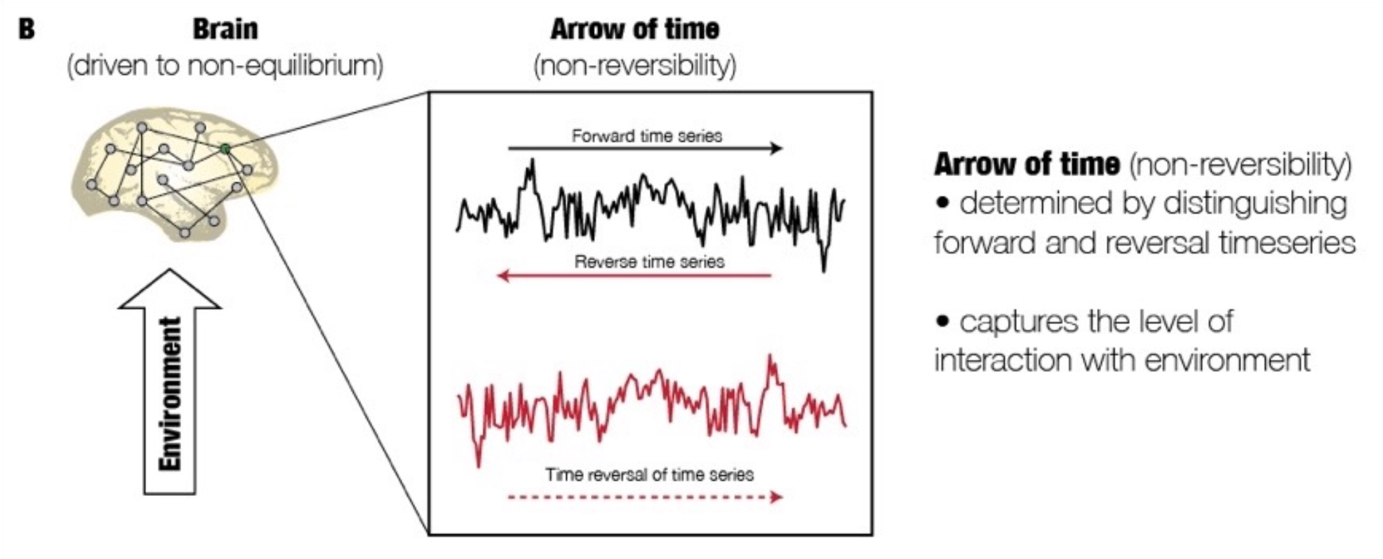
Albert Einstein explained the following in his Autobiographical Notes of 1949: “A theory is more impressive the greater the simplicity of its premises, the more different things it relates, and the more expanded its area of applicability. Therefore the deep impression that classical thermodynamics made upon me. It is the only physical theory of universal content which I am convinced will never be overthrown, within the framework of applicability of its basic concepts.”
The principles of thermodynamics are applicable to any system. From the understanding of engines, chemical reactions, the expansion of the universe or black holes, to the study of brain states
Researchers at UPF’s Computational Neuroscience Group at the Center for Brain and Cognition (CBC), in collaboration with universities in Argentina, Australia, China, Europe and the United Kingdom, have recently published a study in which they show how the second law of thermodynamics has helped them understand and generate a robust biomarker to distinguish brain states.
“For many years, our group has been studying how the dynamics of the brain change in different states, for example, between sleep and wakefulness and active cognitive activity, or during a coma, or in patients with neurological diseases”, explains Gustavo Deco, group director and ICREA researcher. “The underlying idea is that the brain works like an orchestra, with a conductor and section leaders (violins, wind, strings, etc.) and depending on our status, these hierarchies change and transform, and this is when we manage to distinguish things. A hierarchical system is where there are one or more zones that take the baton, that lead other areas”.

“The underlying idea is that the brain works like an orchestra, with a conductor and section leaders (violins, wind, strings, etc.) and depending on our status, these hierarchies change and transform, and this is when we manage to distinguish things”
This change can be quantified by measuring how they are functionally connected to each brain state. In the study published in the journal Communications Biology, the researchers quantified this hierarchy, but not only by measuring the interactions between the various parts of the brain using a technique called fMRI (Functional Magnetic Resonance Imaging), which allows seeing brain activity, but using a trick based on the second law of thermodynamics that says that a system tends to move from ordered to more random behaviour with the passage of time.
This increase in the level of disorder is known as “entropy”. As time goes by, and if entropy increases, it means that the system is not in equilibrium and is non-reversible in time, that is, we cannot know at what point it is. Conversely, if entropy does not grow or does not occur, then it is a system in equilibrium and, as such, reversible in time.
An example of the increase in entropy, where the system is irreversible, would be a video about a breaking glass, and if we see the film backwards or forwards we can easily know when we find ourselves (before or after the glass breaks, for example).
In contrast, a system where entropy does not increase, in other words reversible, would be a video about a game of billiards, the moment at which two balls collide and rebound away from each other. Since playing the video either forward or backward provides identical images, we cannot distinguish at which point we are.
“By quantifying the relationship between different parts of the brain, symmetry is broken”, Deco explains. “If I move the series of signals back and forth, and compare them as I did with the films, I will be able to know which system it is: a reversible one is not hierarchical. A non-reversible one is a “hierarchical” system.
By applying this logic, the researchers saw that the technique is a good biomarker of brain consciousness. In experiments on humans, fMRI data showed that there are differences between resting state and wakefulness and when we perform cognitive tasks. “We saw that as we perform more cognitive tasks, we have more non-reversibility, that is, the system is more hierarchical and, on the contrary, in not being conscious, non-reversibility decreases, that is, the system is less hierarchical”, Deco continues. “This is a very good biomarker since it is very sensitive and it is telling us that there is a mechanism behind it, and this serves very well to be able to classify the different brain states, especially those in which there is no clear consensus, like coma”.
This is a very practical topic as the classification of states helps define patient treatments and expectations. Having a good biomarker that characterizes any type of neuropsychiatric disease, cerebrovascular accident, heart attack and even depression is the first step. “Then it must be modelled and the in silico model must be used to test all the perturbations that are possible and that are also individualized, for each person, to determine the best plan of action to treat each patient. This type of approach is of great translational interest, that is, for applying the results of this basic research to the industry”, he concludes.

